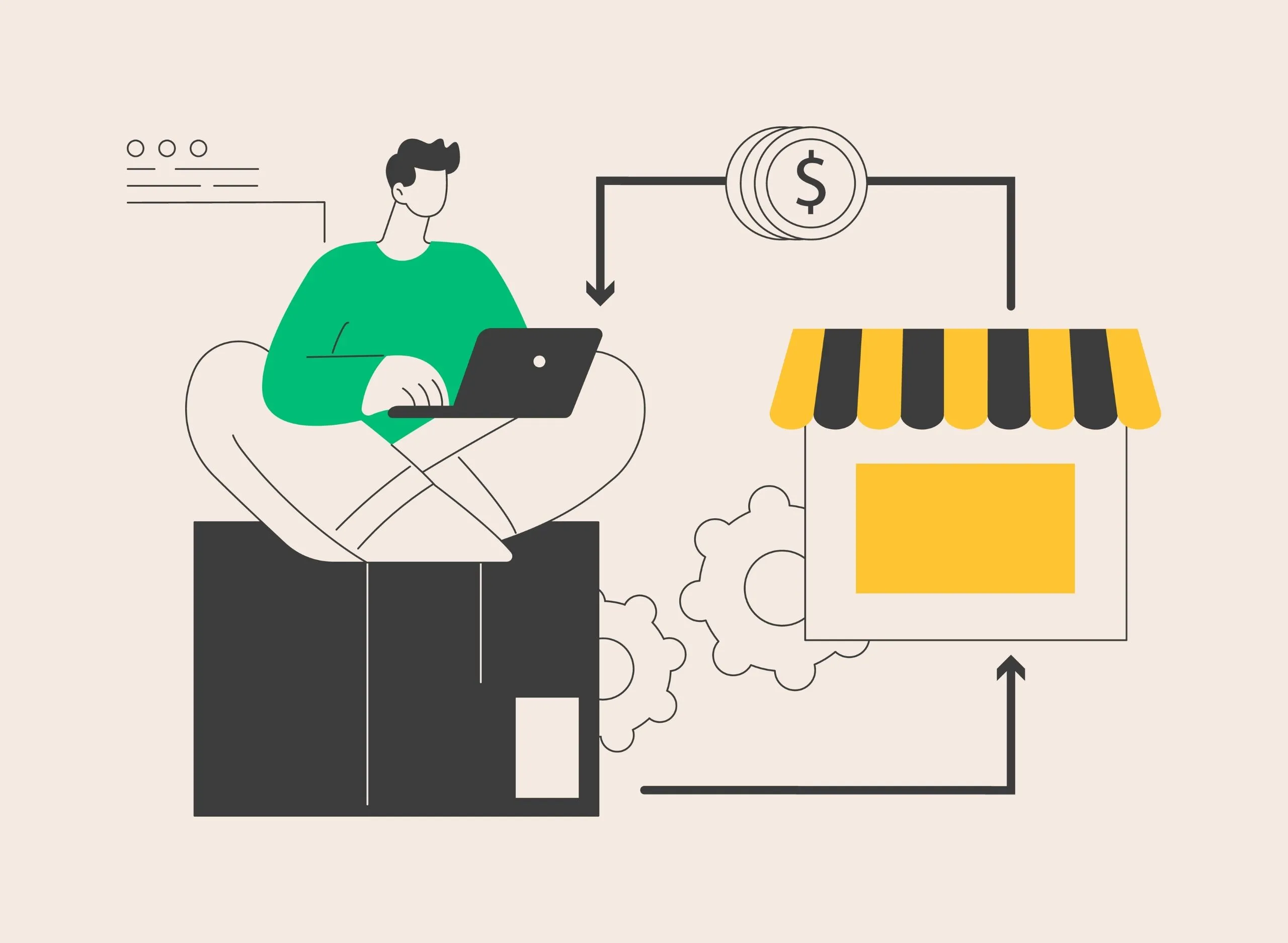E-commerce offers an attractive business opportunity even for entrepreneurs without large capital.
Establishing a successful online business in the digital world doesn’t require a significant investment. However, with the right strategies, you can take significant steps with a small amount of capital. In this article, you’ll discover how to start your e-commerce business with minimal capital, reduce costs using specific methods, and achieve success.
1. Fundamental Steps to Start E-commerce with Minimal Capital
For those looking to start an e-commerce business with limited capital, several fundamental steps can help. These steps include strategies to minimize your initial investment.
1.1. Identify a Suitable Niche
Success in the e-commerce world begins with finding the right niche. A niche is a specific market area that caters to particular customer needs and is less competitive. Focusing on a niche market allows you to build a customer base quickly and enter the market with lower costs.
1.2. Start Small and Grow Gradually
Instead of offering a broad range of products at the beginning, focus on a few high-demand items. This ensures optimal use of your capital. You can leverage organic marketing methods to increase the popularity of your products.
2. Setting Up an E-commerce Website with Minimal Capital
Creating an e-commerce website is one of the foundational elements of your business. It’s possible to achieve this on a limited budget.
2.1. Use Ready-to-Use E-commerce Platforms
You don’t need to make a significant investment to set up an e-commerce website. Platforms like Shopify, WooCommerce, Wix, or BigCommerce enable you to create a professional website on a budget. These platforms offer everything you need, from design to payment systems and security, making them ideal starting points.
2.2. Focus on Simplicity and User-Friendliness in Design
Instead of complex and costly web designs, opt for simple, user-friendly, and mobile-compatible designs at the start. Remember, user experience plays a crucial role in boosting sales.
2.3. Choose Affordable Hosting and Domain Options
Selecting cost-effective hosting and domain options helps you balance your budget. Using affordable, fast, and secure hosting providers can significantly reduce your initial costs.
3. Product Sourcing and Inventory Management on a Budget
To succeed in e-commerce, sourcing the right products is essential. Here’s how to manage this process with minimal capital.
3.1. Utilize Dropshipping
Dropshipping is one of the most popular methods for starting e-commerce with minimal capital. In this method, you don’t stock products in advance. Instead, suppliers ship products directly to customers when you receive orders, eliminating inventory and logistics costs.
3.2. Work with Small Suppliers
By sourcing products directly from suppliers in smaller quantities, you can reduce your risk and minimize inventory costs.
3.3. Create Your Own Products
If you have the skills to create certain products, offering handmade or customized items can establish a profitable e-commerce model with low costs. Unique products give you a competitive advantage.
4. Boosting Sales with Digital Marketing and SEO Strategies on a Budget
Digital marketing strategies are essential for growing your e-commerce business. By using cost-effective marketing methods, you can increase your sales.
4.1. Search Engine Optimization (SEO)
SEO is the most effective way to increase your website’s visibility organically. With minimal capital, SEO efforts can help you rank higher in search engines and reach more potential customers. Key components of SEO include keyword research, on-site optimization, and content creation.
4.2. Social Media Marketing
Social media is a powerful tool for reaching large audiences on a budget. By sharing targeted content on platforms like Facebook, Instagram, and TikTok, you can achieve organic growth. Additionally, influencer marketing can help you reach broader audiences.
4.3. Email Marketing
Email marketing allows you to communicate directly with your customers. By preparing content that promotes your products, shares information about campaigns, and attracts potential customers, you can increase sales.
5. Reducing Costs with Logistics and Fulfillment Services
Logistics and delivery are among the largest costs for e-commerce businesses. Here’s how you can manage these processes on a budget.
5.1. Utilize Fulfillment Services
Fulfillment services are professional providers that store, pack, and deliver your orders. These services simplify inventory management, especially if you’re not using dropshipping. Leveraging fulfillment services minimizes logistics costs and saves time.
5.2. Establish Your Own Warehouse Management System
At the initial stage, you can manage inventory with a smaller warehouse space. Efficiently organizing your warehouse operations optimizes logistics processes and reduces costs.
5.3. Choose Cost-Effective and Fast Shipping Solutions
When selecting shipping options, prioritize providers offering cost-effective yet fast delivery. Additionally, free shipping campaigns can enhance customer satisfaction.
6. Tips for Enhancing Customer Satisfaction
In e-commerce, customer satisfaction and loyalty are crucial for long-term growth, even with minimal capital.
6.1. Prioritize Customer Support
Respond quickly and effectively to customer inquiries. Options like live chat, email support, and phone communication can enhance customer satisfaction.
6.2. Offer Easy Return and Exchange Policies
Providing simple return and exchange processes builds customer trust. This increases loyalty and encourages positive reviews.
Building a Successful E-commerce Business with Minimal Capital
The journey of starting an e-commerce business with limited capital is achievable with the right strategies and smart investments. By avoiding high costs and leveraging methods like digital marketing, dropshipping, and fulfillment services, you can grow your business and establish a successful online presence. Remember, initial challenges can turn into success with the right steps.





